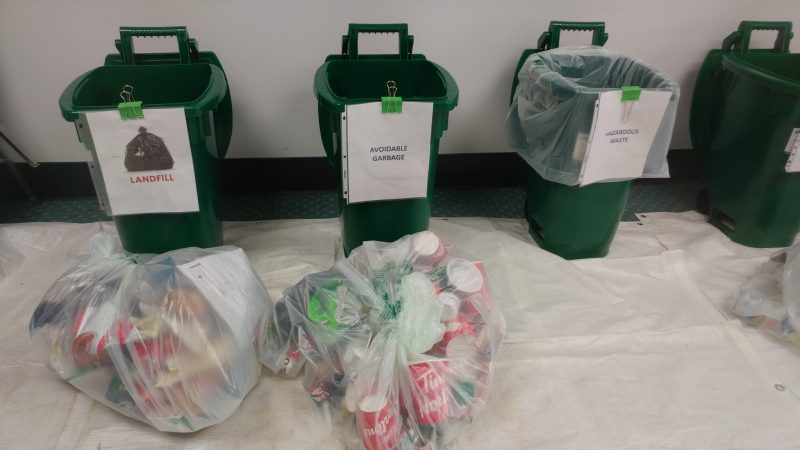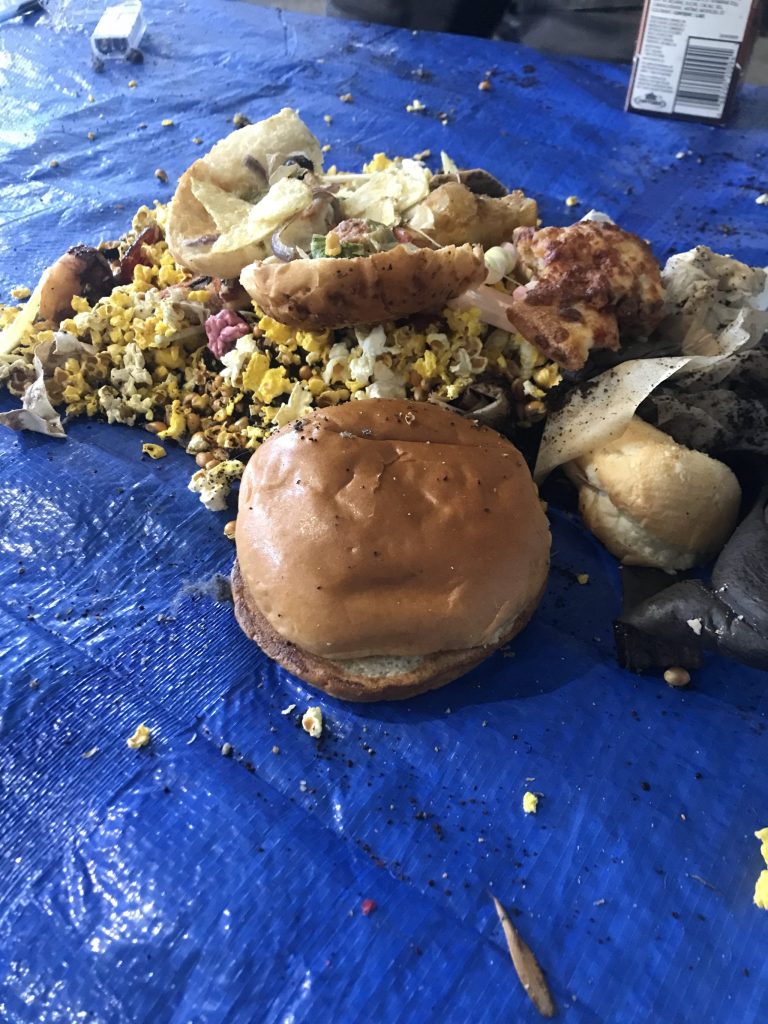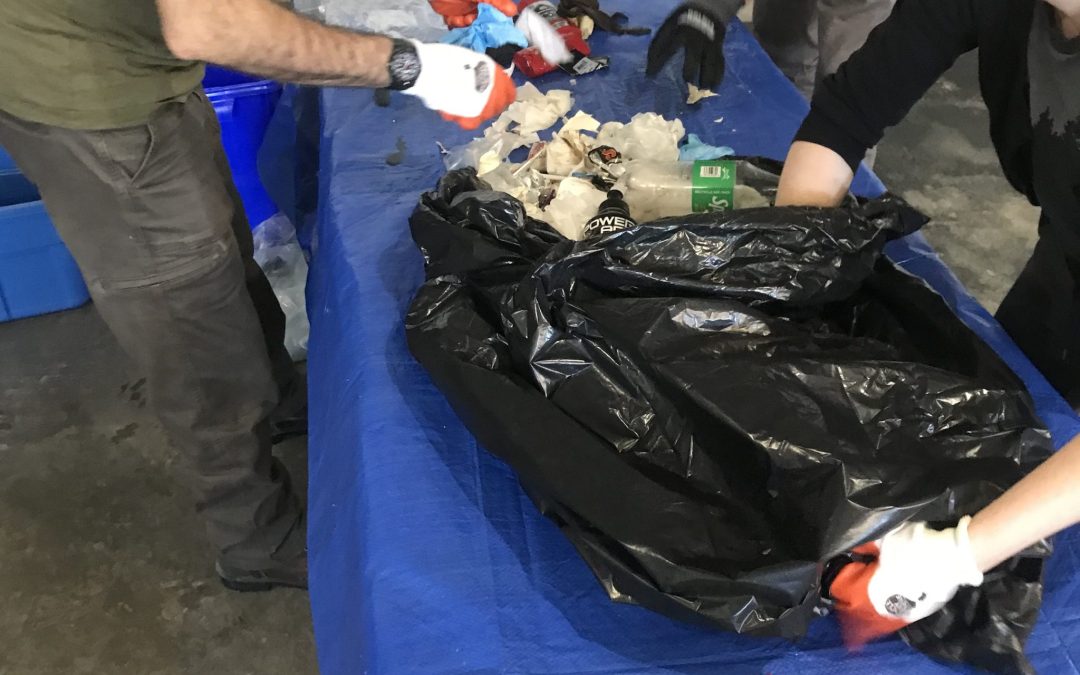Did you know that only 9% of plastic actually gets recycled globally? Or that in Canada, more than half of what we throw in the trash could be diverted from the landfill? Or that Winnipeg’s waste stream is made up of 44% food? This means that around half of what is being thrown into landfills could otherwise have been consumed or disposed of in a more sustainable way!
We learn this by studying waste and performing things called waste audits. But what exactly is a waste audit?
Waste audits are studies that look at how waste is being disposed of. Usually, three waste streams are looked at: garbage, recycling, and compost. Waste audits provide insights into contamination and sorting habits in the different waste streams. From this information, suggestions on proper sorting and tips on how to reduce waste can be made.
As an example, Winnipeg’s waste diversion rate has been stuck around 33% for the last decade – but if more people and organizations did waste audits to learn more about what they throw away, that diversion rate would increase!
You can do waste audits anywhere: in schools, in workplaces, and in communities. You can even do home waste audits to improve your household waste habits.
How it’s Done
So how do you do a waste audit? Waste audits are pretty straightforward and you can conduct them by following these steps:
- Plan the audit
- The first step is to plan the audit. This involves figuring out who will lead the audit, who will be on the team, and when the audit will take place
- Organize the waste categories
- The next step is to decide what categories you want to sort during the audit. Your categories can be broad (e.g. recyclables, hazardous waste, landfill, organic waste) or more specific (e.g. general garbage, glass, different #’s of plastics, cardboard, paper, organics, etc.)
- You can create a document that has the categories listed with spaces to fill out their weights and additional information afterwards

- Gather equipment and sample waste
- Before the waste audit, you will want to make sure that some waste to sort through has been collected and set aside. Usually the waste from the day before the waste audit is a good sample.
- On the day of the waste audit, you will gather equipment before the audit starts, which includes:
-
- needle-proof gloves
- pen
- clipboard and category sheets
- phone or camera (to take pictures)
- table (to sort on)
- tarp (to put on top of the table)
- scale (to weigh the waste)
- bags and bins (to sort the waste into)
-
- Separate the waste into their proper categories
- When the audit starts, you will sort each waste by waste streams. Garbage, recycling, and organics are the three waste streams you will encounter in your audit, however, not all waste audits will have all three. You’ll begin by emptying the waste onto a table. Recycling is the best stream to start with, as it’s usually the least messy. Once the waste is on the table, you’ll sort the waste into different categories based on the ones you chose in step 2.
- Document information
- After everything is sorted, weigh and record the weights of your categories. Make sure to do this for each stream! Note anything interesting that might come up and take pictures of the sorted waste

- After everything is sorted, weigh and record the weights of your categories. Make sure to do this for each stream! Note anything interesting that might come up and take pictures of the sorted waste
- Calculate the capture and diversion rate
- If your sample waste is from one day, you can multiply the total weight of the waste you audited by the number of days that the place you are auditing is open to find out the estimated annual waste generation. For example, if you are auditing a school that is open 190 days a year and you weighed 25kg worth of waste during the waste audit, the estimated annual waste generation is 4,750kg!
- The capture rate is the amount of recyclable material recycled divided by the total amount of recyclable material found, and the total amount of compostable material composted divided by the total amount of compostable material found in the audit.
- The diversion rate is the weight of recyclable materials actually recycled and compostable materials actually composted divided by the total weight of all waste combined.
- Present the information
- If you are doing a waste audit for another person or organization, you should present the information (in a report and/or presentation) that summarizes your findings from the waste audit and suggests actions on waste management improvements.
- Follow-up waste audit
- You can do a follow up waste audit to see if there are improvements in sorting, recycling rates, and diversion rates some time after the first waste audit.
There are so many benefits to waste audits! By managing your waste better, you are helping the environment, and by reducing and sorting your waste, you are saving money! Waste audits give opportunities to really see and think about the waste that is being thrown away, and they provide opportunities to learn more about what items go in which waste stream. Once the waste audit is complete and the weights are calculated, you can see where improvements can be made to reduce waste and be more sustainable!
If you are interested in learning more about waste audits, feel free to contact us at Green Action Centre!




Recent Comments